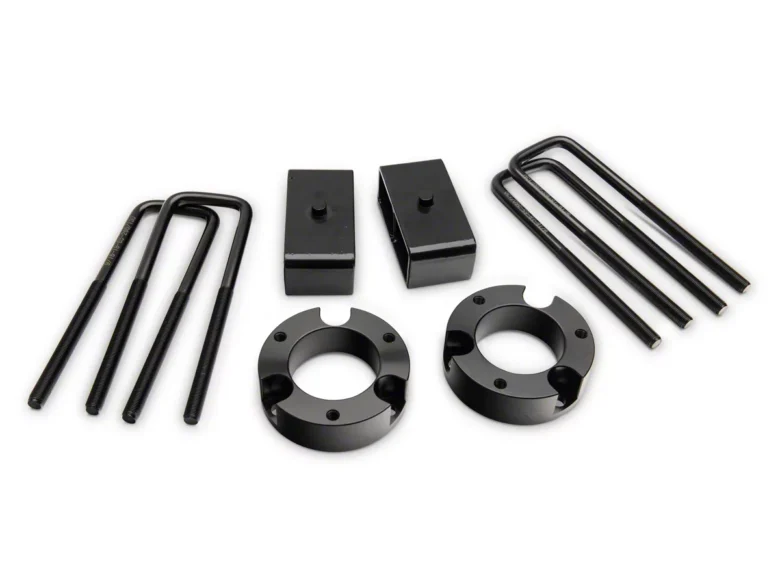Tech
The Essential Guide to Leveling Kits: Elevate Vehicle’s Performance
Published
6 months agoon
By
Jeff bezos
In the dynamic world of automotive customization, leveling kits have emerged as a popular choice among truck and SUV enthusiasts. These simple yet effective modifications not only bolster the aesthetic appeal of a vehicle but also enhance its performance across various terrains. This article offers an in-depth exploration of leveling kits at https://www.kspmotor.com, discussing their benefits, types, installation processes, and important considerations to guide users in making an informed decision.
What are Leveling Kits?
Leveling kits are aftermarket enhancements designed to raise the front of a vehicle to align with its rear. Most trucks and SUVs are manufactured with a noticeable rake—higher at the rear than the front—to accommodate heavy loading and towing requirements. However, for those who don’t frequently haul or tow heavy loads, a leveling kit presents an opportunity to balance the vehicle’s stance and improve its functionality.

Benefits of Leveling Kits
- Improved Appearance: By eliminating the factory rake, leveling kits lend a more aggressive and symmetrical look to the vehicle.
- Increased Ground Clearance: Raising the front end provides extra clearance, beneficial for off-road adventures and navigating rough terrains.
- Larger Tires Accommodation: Leveling makes room for larger tires, boosting both off-road capability and aesthetic appeal.
- Enhanced Visibility: A raised front end can improve the driver’s field of vision, aiding in spotting road and off-road obstacles.
- Better Handling: Some leveling kits can optimize the vehicle’s handling, especially under load or when towing.
Types of Leveling Kits
- Coil Spring Spacers: These spacers are added atop the existing coil springs, offering a simple and cost-effective leveling solution.
- Torsion Keys: Suitable for vehicles with torsion bar suspension, these keys facilitate front-end height adjustment.
- Strut Extensions: For vehicles with strut-based suspension, strut extensions provide an easy bolt-on solution to elevate the front.
Installation Process The installation complexity of a leveling kit varies with the vehicle model and the type of kit. The general process includes:
- Lifting the Vehicle: Safely elevating and supporting the vehicle to access its suspension components.
- Removing Wheels: This step allows better access to the suspension system.
- Installing the Kit: Depending on the kit type, this may involve adding or replacing components like spacers, keys, or extensions.
- Reassembly and Alignment: Post-installation, it’s imperative to reassemble the suspension and perform a wheel alignment to ensure proper handling and tire longevity.
Considerations Before Purchasing
- Vehicle Compatibility: Check if the kit is suited for your vehicle’s make, model, and year.
- Desired Height Increase: Kits offer varying lift levels; decide how much elevation you require.
- Quality and Durability: Prioritize high-quality materials and reputable brands for lasting durability and safety.
- Impact on Warranty: Modifications can potentially affect your vehicle’s factory warranty; verify with your manufacturer.
- Professional Installation vs. DIY: Consider whether you possess the requisite skills and tools for a DIY installation or if professional assistance is preferable.
Conclusion Leveling kits offer a viable solution for enhancing both the functionality and aesthetic of your vehicle. Understanding the various types of kits, their benefits, and installation requirements enables you to make a choice that aligns with your needs and preferences. Whether you’re an off-road aficionado or simply aiming for a commanding road presence, a leveling kit can be a significant upgrade to your vehicle.
FAQs
- Will a leveling kit affect my vehicle’s ride quality? While some users report a slight change in ride quality, most modern leveling kits are designed to maintain a comfortable ride.
- Can I install a leveling kit myself, or do I need professional help? This depends on your mechanical skill level and the complexity of the kit. Some kits are straightforward and can be a DIY project, while others might require professional installation.
- How long does it take to install a leveling kit? Installation time can vary but typically takes a few hours.
- Will a leveling kit void my vehicle’s warranty? It can, depending on your vehicle’s warranty terms and the type of kit installed. It’s best to check with your vehicle manufacturer.
- Can I return my vehicle to stock height after installing a leveling kit? Yes, most leveling kits can be removed, allowing the vehicle to return to its original height.
This guide to leveling kits has been crafted to provide comprehensive insights, rendering it an invaluable resource for vehicle owners contemplating this modification. By choosing an appropriate kit and ensuring correct installation, you can significantly elevate your truck or SUV’s performance and appearance.
Read also: https://magazineskills.com/
You may like

Saudi Hajj Visa and Saudi Visa for Entrepreneurs: Bridging Spirituality and Innovation in the Kingdom

Navigating the Saudi Visa Process: How to Extend Saudi Visa and Understanding the Saudi Transit Visa

Navigating US Visa Status Enquiry and Understanding US Visa Requirements

Navigating the USA Transit Visa and Visa Eligibility Questions

US Visa Blog: Understanding USA Visa Validity

Pampering Pets Sky247 Login, Cricket Id Online & Diamondexch9

CANADA VISA FOR MOROCCAN CITIZENS

Why Color and Design Influence Consumer Behavior in Box Printing

New Zealand Visa Application Form Guide

Guide to US Visa for Children

Saudi Hajj Visa and Saudi Visa for Entrepreneurs: Bridging Spirituality and Innovation in the Kingdom

Navigating the Saudi Visa Process: How to Extend Saudi Visa and Understanding the Saudi Transit Visa

Navigating US Visa Status Enquiry and Understanding US Visa Requirements

Navigating the USA Transit Visa and Visa Eligibility Questions

